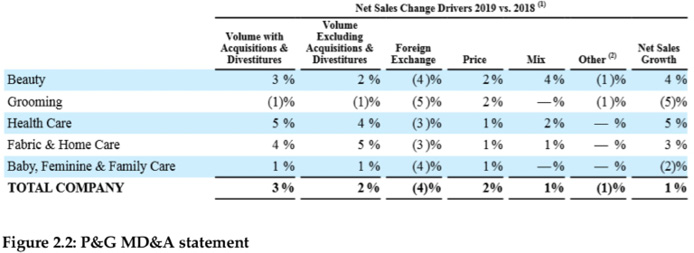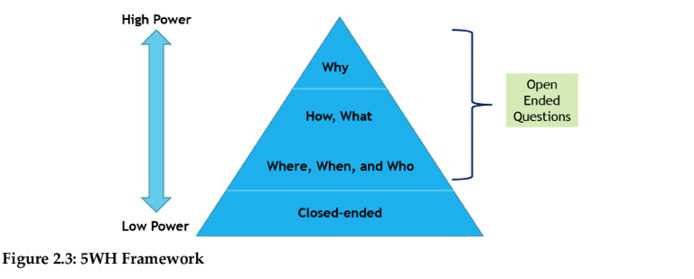Chapter 2
Best Practice #1
Tie Stakeholders’ Goals to Questions and KPIs
“Get closer than ever to your customers. So close that you tell them what they need well before they realize it themselves.”
Steve Jobs
This chapter looks at the first of the ten best analytics practices for a business enterprise. What is a business enterprise and what are its characteristics? A business enterprise is the undertaking of activities associated with the production, sale, or distribution of products or services for its customer(s). A typical business enterprise has three key characteristics.
- It must address the needs of the market or the customer
- It must seek to create value for its investors, customers, and other stakeholders
- It should engage employees to work together in an organized way to produce results for its stakeholders.
In other words, there is no business enterprise without a customer or stakeholder, and every business activity can be attributed directly or indirectly to serve the needs of the stakeholder. Hence like in any other business initiative, in data analytics initiatives too, stakeholders and their insight needs hold the key to successful business results. An analytics initiative is deemed successful when it meets or exceeds the expectations of the stakeholders - individual, group, or organization. While there are many stakeholders who have an interest in the analytics initiative, the key stakeholders are the ones who will be making business decisions consuming the insights derived from the analytics solutions.
With this backdrop, for a business enterprise to conduct itself in a purposeful way, it must first specify the goals for itself, implement them, and then it must track those goals to the actual results. Unfortunately, businesses worldwide are investing heavily in analytics without obtaining the expected ROIC (return on invested capital). Defining clear goals is the first step in analytics initiative as goals define the outcome. The more carefully and clearly one defines the goals, the more likely they are to do the right things and achieve what they wanted to accomplish. Research by Bain consulting found that 30% of the executives said they lack a clear strategy and goal for embedding data and analytics in their companies [Brahm and Sherer, 2017]. Thus, the goals for analytics initiatives should be stated as clearly and critically as possible. But how does one do that?
Though there are many ways to define goals for analytics initiatives, strengthening the goal statement, and aligning the goal statement to the working culture of the company is very important. One way to clarify and strengthen the goal statement is by asking the right questions, and aligning it to the working culture of the organization. One indicator of understanding the working culture of the company is the way the company uses its KPIs (key performance indicators) in its business operations. By mapping business goals to the questions and to the KPIs, organizations can form an accurate and holistic picture of the business environment and the needs of the stakeholders. In a line, goals state the purpose, questions provide the context and depth, and KPIs align the objectives to the working culture.
According to Donald Sull and Charles Sull in MIT Sloan Management Review, to execute strategy, leaders must set ambitious goals, translate them into specific metrics and milestones, make them transparent throughout the organization, and discuss progress frequently. They found that four core principles underpin effective goal systems, and they summarize these elements with the acronym FAST. Goals should be embedded in frequent discussions, ambitious in scope, measured by specific metrics and milestones, and transparent for everyone in the organization to see. [Donald Sull and Charles Sull, 2018].
Payer of Invoice is not the main customer—the consumer of insights is the main customer in analytics!
It is not enough to just define a high-level goal statement. What is needed is a clear and tangible goal statement. While businesses worldwide are investing heavily in analytics, half of all analytics models developed are never deployed [Coombs, 2019]. Why? One of the key reasons is not asking the right questions and unable to apply insights on business operations. In the field of analytics, this is known as the last mile of analytics (LMA), which is deriving insights and making decisions for better business performance.
According to Chris Brahm and Lori Sherer of Bain Consulting, “we see clients struggling in the last mile. That is the gap between a great analytic output and the actual changed behavior that creates value in the enterprise” [Brahm and Sherer, 2017]. The analytics deployment process adapted from the work of SAS-Institute, the leader in analytics software, is shown in Figure 2.1 [Grover, 2019]. This deployment process aligns with the analytics value chain “Needs-Data-Models-Insights-Efficiencies” discussed in chapter 1.
Why is this a best practice?
Data, insights, and knowledge resources are often distributed within and across business enterprises. Strong business performance rests upon the ability of the business enterprise to share and use the data and insights efficiently [D’Aubeterre et al., 2006]. Many analytics initiatives spend a considerable amount of time on stakeholder analysis, that is, identifying the key analytics stakeholders and understanding their insight needs. But who is a stakeholder? According to PMI (Project Management Institute), a formal definition of a stakeholder is: “individuals and organizations who are actively involved in the initiative, or whose interests may be positively or negatively affected as a result of execution or successful completion of the initiative” [PMI, 2017].

But often in a business enterprise, the insight needs of the stakeholder are complex, varied, and diverse, and these competing requirements when translated into goal statements become generic and vague. The goal statement should consider the stakeholder needs or goals, and once defined, be refined and strengthened by asking appropriate questions, which are validated using the right KPIs. So basically, the stakeholder needs should be based on a goal statement and refined with questions and KPIs.
But what exactly is a goal? A goal is a desired result that a person or an organization envisions, plans, and commits to achieve within a finite amount of time in an environment. The goal defines the context of the problem or the opportunity statement. Clearly, goal setting in an enterprise can address problems and improve business performance. According to Douglas Hubbard, author of How to Measure Anything: Finding the Value of Intangibles in Business, “A problem well stated is a problem half solved.”

Once the goal is formulated, it can be refined by asking good questions. Questions are the simplest and most effective way of eliciting information. Eric Schmidt, the former CEO of Google, said - “We run Google on questions, not answers.” According to Eugène Lonesco, French playwright “It is not the answer that enlightens, but the question.” French writer, historian, and philosopher Voltaire said - “Judge a person by their questions rather than by their answers.” According to business management guru Peter Drucker, “the important and difficult job is never to find the right answer; it is to find the right question. [Dyer et al., 2011].” According to Edwards Deming, “If you do not know how to ask the right question, you discover nothing” [Lippitt, 2019]. According to Alison Brooks and Leslie John in their Harvard Business Review article, “questioning is a uniquely powerful tool for unlocking value in organizations: It spurs learning and the exchange of ideas, it fuels innovation and performance improvement, it builds rapport and trust among team members. And it can mitigate business risk by uncovering unforeseen pitfalls and hazards” [Brooks and John, 2018]. In short, questions in analytics initiatives help in strengthening the stakeholder goals.
Once the business goals are strengthened with good questions, the goal can be further validated with pertinent KPIs used by the business. KPIs are usually a reflection of a company’s strategic objectives in driving business results. If a business is using KPIs to measure its performance, those KPIs typically drive business behavior, results, and the organization culture.
Hence in the context of analytics initiatives, one must ensure that the insights derived align with the KPIs as these KPIs influence user behavior and the organization’s working culture. To summarize, associating the stakeholder’s goals to questions and KPIs helps in clearly defining the goals of the analytics initiatives in the enterprise and increases the likelihood of the initiative’s success and adoption in the organization.
Realizing the best practice
As discussed in chapter 1, implementing the analytics best practice rests on having the motivation and the pertinent skills associated with the implementation. Realizing this best practice rests on three main strategies or capabilities.
- Identify stakeholder’s business and analytics goal
- Strengthening the goal statement with pertinent questions
- Refining the strengthened goal statement with KPIs
“Without context, words and actions have no meaning.”
Gregory Bateson, English Anthropologist
1. Identify stakeholder’s business and analytics goal
First and foremost, involving the stakeholders early in the analytics program will build business engagement upfront. But, how can one define a good analytics goal statement? As stated before, business stakeholders have different roles and priorities, resulting in the insights need of the stakeholder being complex and varied. For example, marketing wants to increase revenues by maintaining high inventories so that the products are readily available when the customer places an order for products. But finance generally prefers to keep product inventory low so that inventory holding costs are minimized. So, in this case, it is highly unlikely to have a good goal statement that brings the marketing and finance stakeholders together.

Also, for the most part, business enterprises operate within assumptions and constraints. An assumption is a statement that is presumed to be true without concrete evidence to support it. In the business world, assumptions enable companies to simplify the understanding of the problem and allow the business to move forward in the face of uncertainty. Constraints can be fiscal limitations, location limitations, time limitations, resource limitations, market risks, or any other constraints that adversely affect the achievement of the business goal. In addition, the goals defined should align with the company strategy, corporate goals, and the business roadmap. But where does one get these details for defining the goal statement?
There are two main approaches to define the goal statement. The first one is the conventional or the traditional method of directly eliciting the needs or requirements from the stakeholders or insight consumers using techniques such as questionnaires, brainstorming, and prototyping. The conventional approach assumes that the stakeholders or the stakeholder personas have the information and knowledge to formulate a good goal statement. Creating personas helps one understand the stakeholder needs, experiences, behaviors, and goals in a very concrete manner. But often stakeholders or rather the stakeholder personas are not completely aware of the future strategy of the company. So, where can one get this kind of information? The second approach is the indirect or unconventional approach of eliciting information. There are three sources to get that type of information:
- Company’s financial statements
- Management discussion and analysis (MD&A)
- Analysts’ calls.
There are four main financial statements of a company: (1) balance sheets; (2) income statements; (3) cash flow statements; and (4) statements of shareholders’ equity. These financial statements are like the report card of a business.
- Balance sheets show what a company owns and what it owes at a fixed point in time.
- Income statements show how much money a company made and spent over a period.
- Cash flow statements show the exchange of money between a company and the outside world over time.
- Shareholders’ equity statement shows changes in the company’s shareholder’s ownership over time.
The MD&A presents the plans for the company. MD&A provides an explanation, through the eyes of management, a holistic view of the company’s financial performance, market conditions, compliance with laws and regulations, its prospects, and approaches to new projects. Here management also highlights product sales, segment performance, margins, and accounting pronouncements, among other things. Below is a 2019 MD&A report of Proctor & Gamble (P&G), a leading CPG (Consumer Packaged Goods) company, where the company has provided details of its various business segments, its contribution to the overall sales, and other performance measures [P&G, 2019].

Lastly, the Analysts’ call, which the third unconventional source on understanding the company’s future strategy, especially for a publicly-traded company, is another great source of information. Here the company’s senior executives share the financial performance and the future direction of the company.
Once the preliminary goal statement is formulated, it can be further refined using the well-known SMART criteria in addition to the FAST criteria that were discussed in the introduction section. The SMART emphasizes that every business objective or goal should be: Specific, Measurable, Assignable, Realistic, and Time-related. Here is an example of an analytics initiative goal:
“Enable the merchandising team to make timely decisions to reduce the operational spend by 15% and achieve a customer satisfaction of 95% by December 2022.”
2. Strengthen the goal statement with pertinent questions
Once a broad goal statement is formulated, a set of questions can be used to strengthen or clarify the goal. “Question everything,” Albert Einstein famously said. As analytics is fundamentally using data to answer business questions, questions are the core component in analytics. Usually, customers know what they want, but they don’t know to articulate it well. So, asking specific questions will allow you to glean insights behind the goal statement. In business, good questions can make the difference between a successful and a failed endeavor, and asking good questions is considered one of the most important skills in business.

The questions generated should strengthen the goals in a quantifiable way, help to clarify the goals, and capture the variation in the understanding of the goals that exist among the different stakeholders. So, where and when are we asking those questions? Kick-off meetings or design workshops that are typically held during the initial stages of the analytics initiative can be used to ask questions and clarify the goal. Here stakeholders should be encouraged to ask questions about the business challenge or opportunities and how data analytics can be used to solve the problem. This brings us to the next part, which is, how does one ask good questions? In this backdrop, there are two key question generation techniques that can be used to formulate the right questions.
1. 5WH Framework
The goal statement can be strengthened by asking closed-ended and open-ended questions. Closed-ended or dichotomous questions are those which can be answered by a simple “yes” or “no,” while open-ended or exploratory or 5WH questions are those which require more than a simple one-word answer. For answers to these open-ended questions, it is better to get more responses from multiple stakeholders for completeness. Also, getting answers from multiple stakeholders might lead to more powerful questions.
The 5WH are questions whose answers are considered basic in information-gathering. According to the 5WH principle whose origins can be traced to journalism, a report can only be considered complete if it answers these questions. An example of the 5WH framework can be:
- Who is the customer?
- What did the customer buy?
- When did the customer buy?
- Where did the customer buy?
- How did the customer buy?
- Why did the customer buy?
As seen above, while the first five questions have a direct answer, the “Why” question is more powerful and requires thorough analysis before answering. The 5WH framework is as shown below.

2. Blooms’ Taxonomy
The second question generation technique is Bloom’s taxonomy. Bloom’s taxonomy, developed by Benjamin Bloom, an American educational psychologist, helps to compose questions on six levels ranging from lower to higher levels of cognitive thinking. The framework consists of six major categories: Knowledge, Comprehension, Application, Analysis, Synthesis, and Evaluation. Below is an example of the application of Bloom’s taxonomy in business.
- Knowledge - Who are our top five customers by sales orders value?
- Comprehension - Compare the performance of the health drink business unit in 2017 and 2018?
- Application - What is the impact on quality when the price is reduced by 12%?
- Analysis - What are the variables that impact my retail store sales?
- Synthesis - What is the impact on sales by consolidating two sales offices?
- Evaluation- Can I issue this PO to this new vendor?

However, while eliciting answers from the questions either by using the 5WH framework or Bloom’s taxonomy, a few questions might not have clear answers. In that case, hypotheses can be used to explain and answer the phenomena. In business, a hypothesis is an educated guess or intuition one creates prior to running a project based on cause, effect, and rationale. Regardless of whether the questions give clear and definite answers, it is always better to use a hypothesis, as hypotheses help in the derivation of the attributes associated with the goal statement.
The right question(s) reframes the problem or opportunity and forces one to look at it in a different way. But there could be a chance that one might get into the framing trap. While questions are the key to deriving insights in analytics, not framing the question in the right manner can be very dangerous. The framing trap occurs when we misstate a problem, undermining the entire decision-making process. However, one can address the adverse effects of framing bias by employing the following guidelines:
- Pose problems in a neutral or unbiased way
- Always try to reframe the problem in various ways at different time frames with different stakeholders in different contexts
- Align the question list to the decision-making process in the organization
3. Refine the goal statement with KPIs
The third strategy to further refine the goal statement is using the KPIs. KPIs drive business performance and the organization’s working culture. In other words, KPIs enable actionable insights. According to research by KPI-Institute and Aberdeen group, companies that track performance using KPIs achieve two times higher net-income growth and three times higher sales growth than those companies who do not [KPI-Institute, 2012]. However, in most companies, KPIs not only drive business performance, they also impact employee behavior and the working culture.
How can KPIs affect working culture? For example, some companies use EBITDA (Earnings before Interest, Taxes, Depreciation, and Amortization) as a profitability KPI. Many experts argue that EBITDA is not a great KPI as the cost of doing business should include the taxes paid to the government, the interest that the company pays to the lenders, the depreciation of assets, and other expenses, and these expenses are not factored in the EBITDA. So, one key reflection of a company using the EBITDA metric, is that the company does not focus much on the depreciation of tangible assets like machinery. Simply put, asset management is not a very critical element or priority to these firms in their operation. So, if asset-intensive companies in the Energy and Telecom sectors take EBITDA as the profitability KPI, the company is potentially not focusing on optimizing its assets, thereby affecting the behaviors and the performance of the employees towards asset management.

The second example of the impact of KPIs on working culture is related to the implementation of a performance dashboard for an Oil refinery. The KPIs selected in the dashboard were expected to bring financial visibility into the refinery operations. This led to the identification of savings of US$ 8 million/annum for the Oil Refinery. This means the savings could result in OPEX (Operational Expenses) budget for the Refinery Manager slashed by 40%. But the project was not well supported by the Refinery Manager as his promotion and growth in the company was tied to the size of the OPEX budget he managed and not on the productivity savings.
Ultimately analytics initiatives like any other initiatives fail or succeed because of people as ultimately, people deliver results. Knowing the KPIs and their impact on the working culture will help to understand how people are rewarded and recognized. This will help to further fine-tune or refine the goal statement. If the KPIs cannot be changed, then the goal statement needs to be reworked and adapted appropriately without compromising the overall vision or the strategy of the company. If the KPIs do not align with the business goal, new KPIs need to be introduced.
Conclusion
They say, “start with the end in mind.” In business, the journey starts by defining or addressing market needs or stakeholder requirements. Basically, there is no business initiative without a customer, and analytics initiatives are no exception. Analytics initiatives should be driven based on the needs of insight consumers. While many data analytics projects do a great job of identifying the business stakeholders and the consumers of the insights, unfortunately, the goals of the insight consumers are often not very clearly and deeply defined and do not align with the larger objectives of the enterprise. The goals can be refined by asking questions, formulating a hypothesis, and ensuring that the goal statement aligns with the performance KPIs. KPIs hold the key to ensuring that the insights derived from the goal statement are actionable. Also, the inadvertent benefit of involving business stakeholders early leads to higher adoption of analytics. This makes organizational change management much easier, thereby improving the odds of success for the data analytics initiative.
References
- Brahm, Chris and Sherer, Lori, “Closing the Results Gap in Advanced Analytics: Lessons from the Front Lines,” https://bit.ly/2xG6kah, Aug 2017.
- Brooks, Alison W and John, Leslie K, “The Surprising Power of Questions,” Harvard Business Review, May 2018.
- Coombs, Lindsey, “Mystery solved: The case for operationalizing analytics,” https://bit.ly/2V3IMVd, Oct 2019.
- D’Aubeterre, Fergle; Singh, Rahul; Iyer, Lakshmi; and Salam, Al, “Semantic Knowledge Integration for eBusiness Processes: An Ontological Analysis,” AMCIS 2006.
- Donald Sull and Charles Sull, “With Goals, FAST Beats SMART,” MIT Sloan Management Review, Jun 2018.
- Grover, Suneel, “SAS Customer Intelligence 360: Hybrid marketing and analytics’ last mile [Part 1],” https://bit.ly/39vJr6P, Aug 2019.
- KPI Institute, “The value of pre-built Performance Dashboard solutions,” https://bit.ly/2WTBANT, Feb 2012.
- Lippitt, Mary, “Six Situational Mindsets to Putting First Things First,” https://bit.ly/2US8SKu, Aug 2019.
- P&G, https://bit.ly/2JwQbGQ, 2019.
- PMI (Project Management Institute), “A Guide to the Project Management Body of Knowledge,” Project Management Institute, Sep 2017.